Abstract
Recent studies have described tobacco advertising in the print media, on billboards, and through sponsorship of cultural and sporting events. However, little attention has been given to another common and unavoidable source of tobacco advertising, that which is encountered in retail stores. In July 1987, we conducted a survey of 61 packaged goods retail stores in Buffalo, NY, to assess the prevalence and type of point-of-sale tobacco advertising. In addition, store owners or managers were surveyed to determine their store's policy regarding tobacco advertising, receipt of monetary incentives from distributors for displaying tobacco ads, and willingness to display antitobacco ads. Six types of stores were involved in the study: 10 supermarkets, 10 privately owned grocery stores, 9 chain convenience food stores that do not sell gasoline, 11 chain convenience food stores that sell gasoline, 11 chain pharmacies, and 10 private pharmacies. Two-thirds of the stores displayed tobacco posters, and 87 percent had promotional items advertising tobacco products, primarily cigarettes. Larger stores, and those that were privately owned, tended to display more posters and promotional items. Eighty percent of tobacco product displays were for cigarettes, 16 percent for smokeless tobacco products, and 4 percent for cigars and pipe tobacco. Convenience stores selling gasoline had the most separate tobacco product displays. Of tobacco product displays, 24 percent were located adjacent to candy and snack displays. Twenty-nine of the 61 store owners or managers indicated that their store had a policy regulating the display of tobacco ads and tobacco product displays.(ABSTRACT TRUNCATED AT 250 WORDS)
Full text
PDF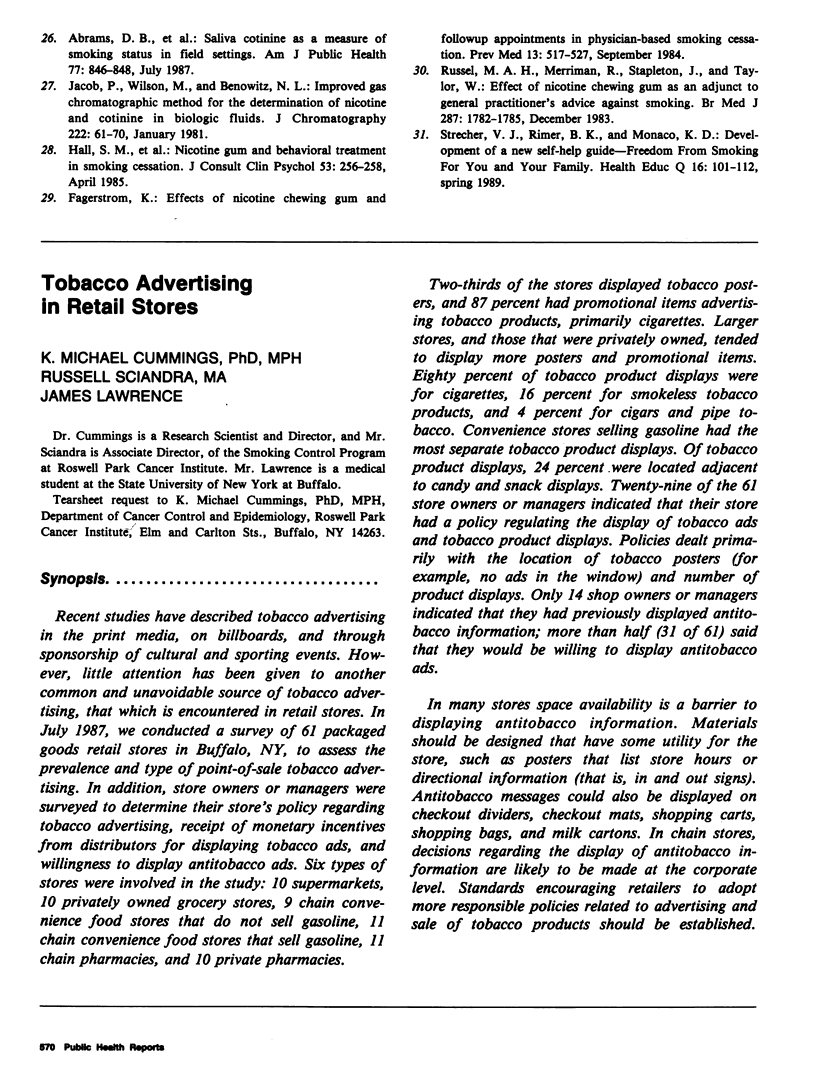
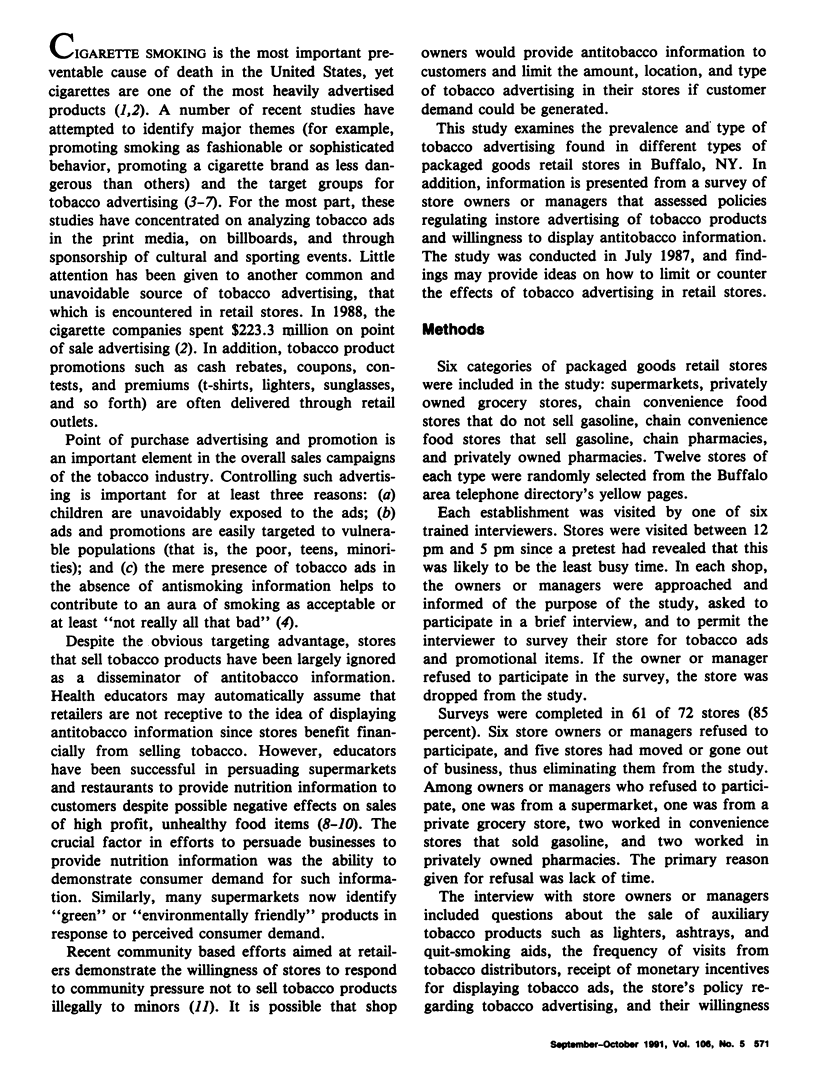
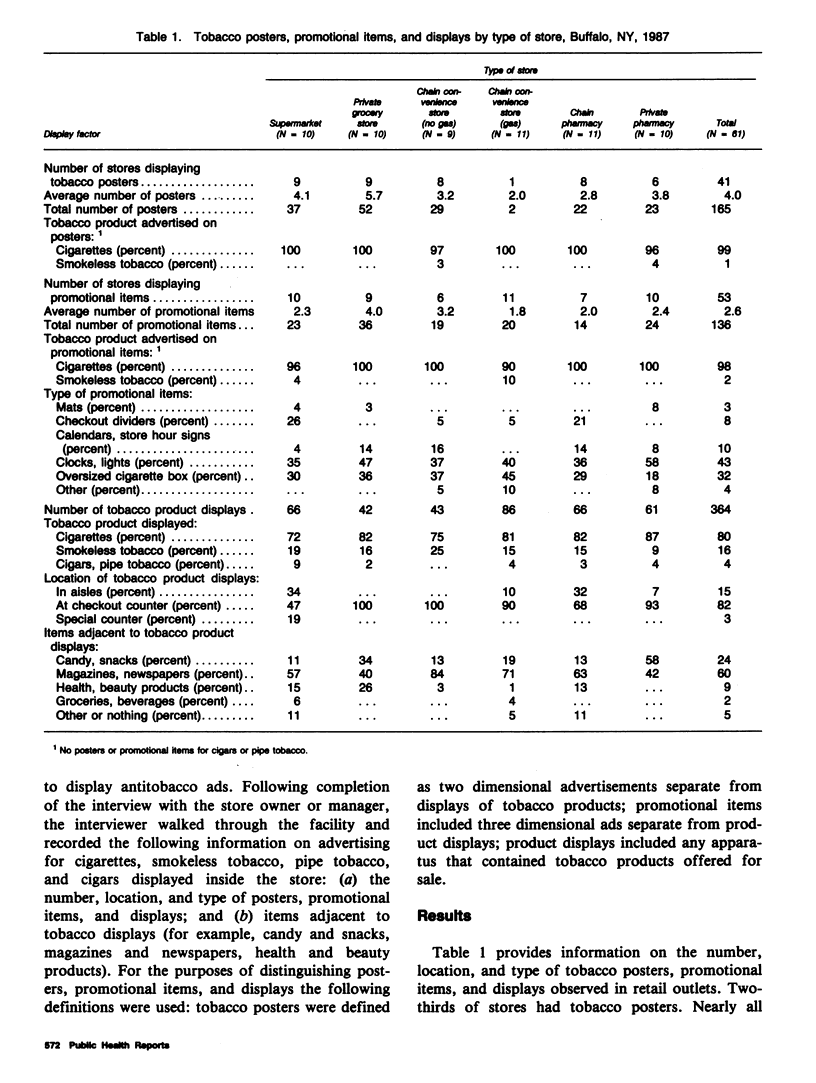
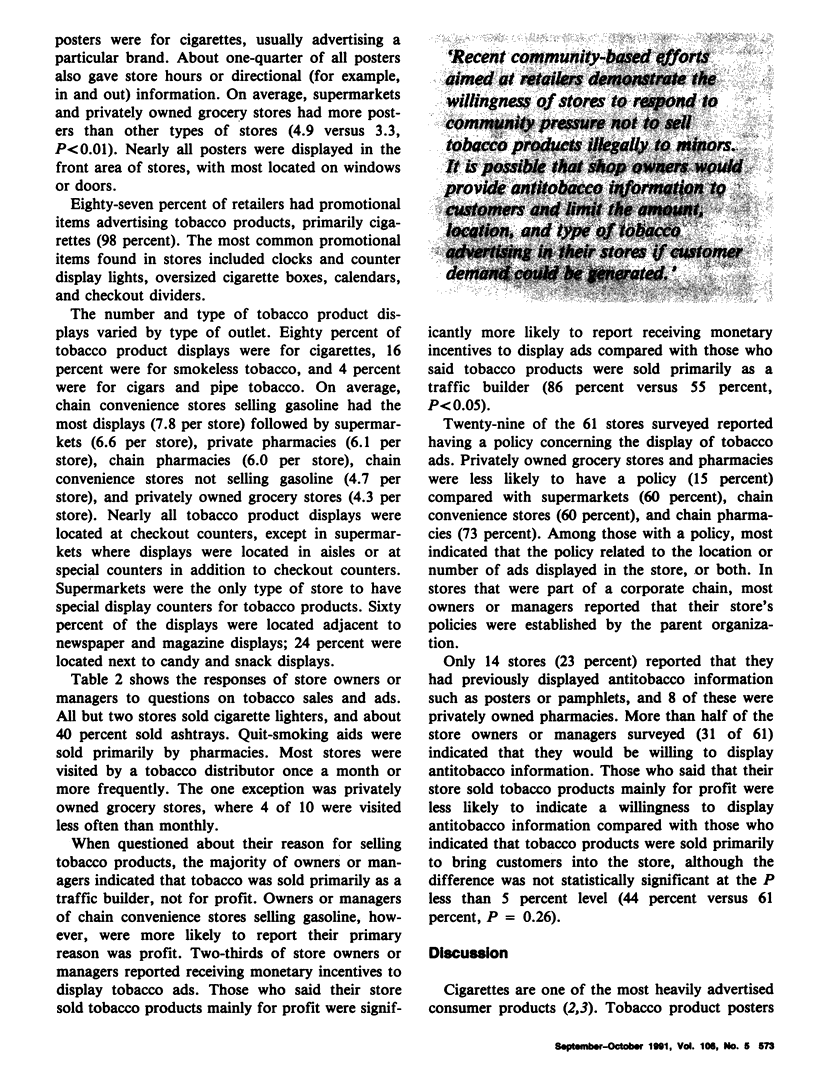
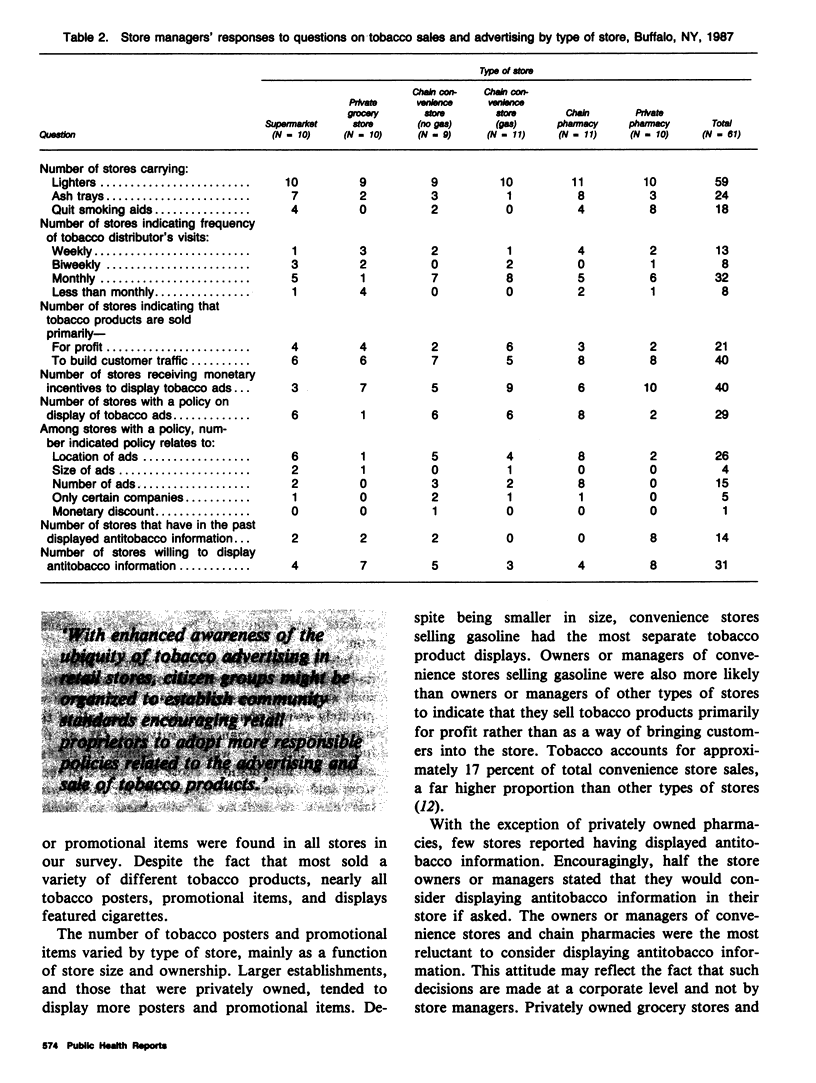
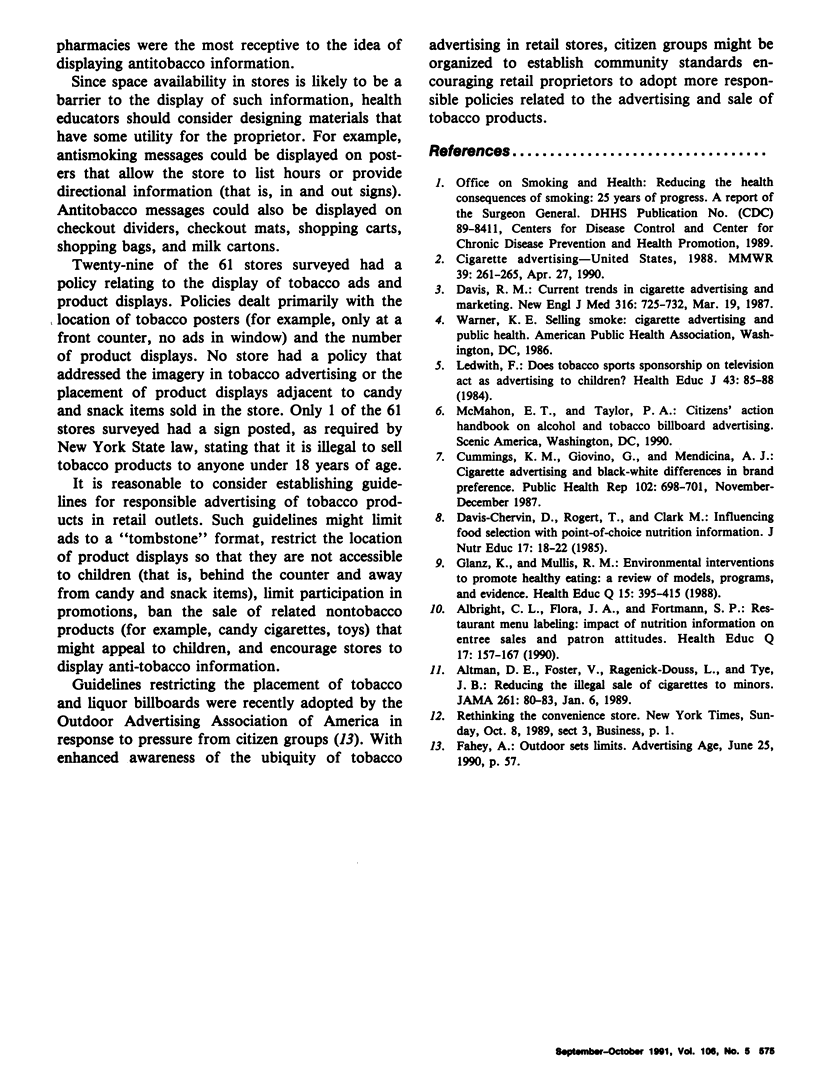
Selected References
These references are in PubMed. This may not be the complete list of references from this article.
- Albright C. L., Flora J. A., Fortmann S. P. Restaurant menu labeling: impact of nutrition information on entree sales and patron attitudes. Health Educ Q. 1990 Summer;17(2):157–167. doi: 10.1177/109019819001700203. [DOI] [PubMed] [Google Scholar]
- Altman D. G., Foster V., Rasenick-Douss L., Tye J. B. Reducing the illegal sale of cigarettes to minors. JAMA. 1989 Jan 6;261(1):80–83. [PubMed] [Google Scholar]
- Cummings K. M., Giovino G., Mendicino A. J. Cigarette advertising and black-white differences in brand preference. Public Health Rep. 1987 Nov-Dec;102(6):698–701. [PMC free article] [PubMed] [Google Scholar]
- Davis R. M. Current trends in cigarette advertising and marketing. N Engl J Med. 1987 Mar 19;316(12):725–732. doi: 10.1056/NEJM198703193161206. [DOI] [PubMed] [Google Scholar]
- Glanz K., Mullis R. M. Environmental interventions to promote healthy eating: a review of models, programs, and evidence. Health Educ Q. 1988 Winter;15(4):395–415. doi: 10.1177/109019818801500403. [DOI] [PubMed] [Google Scholar]


